This “Limited Edition” Blu-ray from Radiance Films is available for purchase on September 10th.
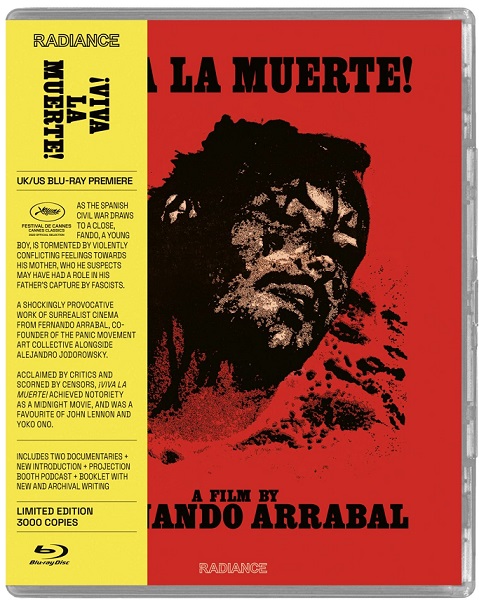
While many go through tough childhoods, artist Fernando Arrabal is one of the few who experienced a difficult one and used it as inspiration for his art. The famous Spanish playwright, artist, novelist, poet and, obviously, screenwriter and film director eventually found success in his adult life as an internationally renowned figure who used his troubled childhood as his major influence. Viva la Muerte was his first feature-length movie that earned plenty of attention during its original release for its disturbing and shocking story elements.
The picture has been difficult to find on disc in North America, but Radiance Films have picked up the rights and are making it available as a “Limited Edition” Blu-ray. As expected with other titles from the distributor, the picture quality is excellent. It contains a 4K film restoration from the 35mm camera negative, so the images on display look as good as they possibly can. And the bonus features will be enlightening to those who may find the surreal narrative difficult to follow, or just want to know more about the movie-maker. In many respects, Arrabal’s work seems in tune with contemporaries like Alejandro Jodorowski (El Topo, The Holy Mountain) and anyone who appreciates his titles will find this release to be of great interest.
This story takes place during the Spanish Civil War. It follows a 10-year-old boy named Fando (Mahdi Chaouch) living in Francisco Franco-controlled Spain. Without warning, his father (Ivan Herriques) is taken by authorities and the child is left traumatized at the loss. He stays with his rather cold-hearted mother (Nurai Espert) and deeply religious, self- flagellating aunt (Anouk Ferjac), witnessing them take part in odd and at times bizarre rituals. He eventually discovers that his mother, a fascist-sympathizer, ratted his father out to authorities for his leftist views. The boy then unexpectedly learns that, despite his death sentence, his dad is still alive and in prison. Fando runs away, hoping to be reunited. Over the course of the film, the child has hallucinations of what may have happened to his father and what he might be doing now. While on his own, Fando also begins to find some sense of himself in this gruesome world.

The narrative is fairly simple and serves as a way for the youngster to have bizarre and surreal visions. Most are captured and displayed on video (which was incredibly unique during this period). These nightmarish scenes make a big impact. There is a striking image of the child’s father buried up to the neck in the desert before being trampled by horses. There is a scene involving eyeball piercings and other forms of torture (the mother even evacuates her bowels on her husband’s head). Another grotesque scene involving his mother features the woman rolling around in a slaughterhouse with the carcass of a bull. She not only beheads the animal, but castrates it. Other provocative moments include whippings, and a cilice being wrapped around the thigh of Frando. Viewers see priests in compromising positions and the boy is frequently abused, leading to uniquely strange behavior.
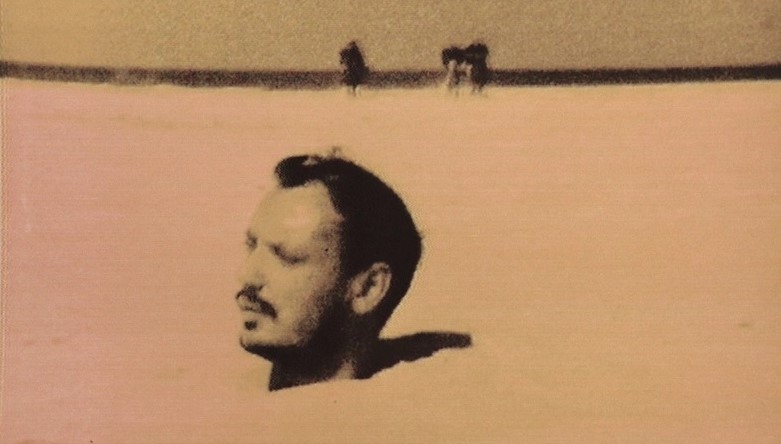
Some images are extreme and startling. The picture effectively displays the effects of life under fascist rule and the horrific behavior of those who follow the far-right leader, as well as the nasty acts of members of the Catholic church. It’s a pretty direct and unsettling message. There is a bit of dark humor to alleviate the bleak tone, but it can still be a rough watch. The intentionally surreal approach often leaves the viewer with more questions about what is happening, but the images on display linger long after the credits roll and the movie is unwavering in its mission.
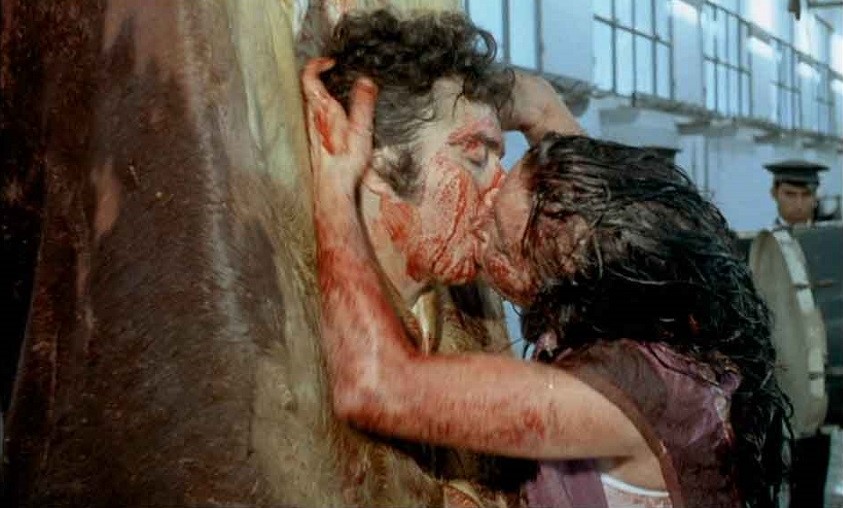
This Blu-ray includes several excellent extras. The first is a commentary track from The Projection Booth podcast that includes Mike White, Heather Drain and Jess Byard. It’s a fine track, although the participants speak more on what each individual thinks might be the deeper meanings behind each scene than assertively stating what Arrabal intended. White notes that he almost managed to get Arrabal to participate in their podcast show, but that he backed out at the last minute.
However, anyone who watches the 2011 feature-length French documentary on Arrabal included on the disc will get a clear sense of what was going on. It’s a detailed examination of the artist’s life as detailed by the filmmaker himself (it is also interspersed with interview footage of his wife). What one might initially assume about the movie turns out to be very true as we learn more about Arrabal’s childhood. Much of the real-life nastiness on display was based on real events and many of the surreal elements were inspired by his feelings at the time.
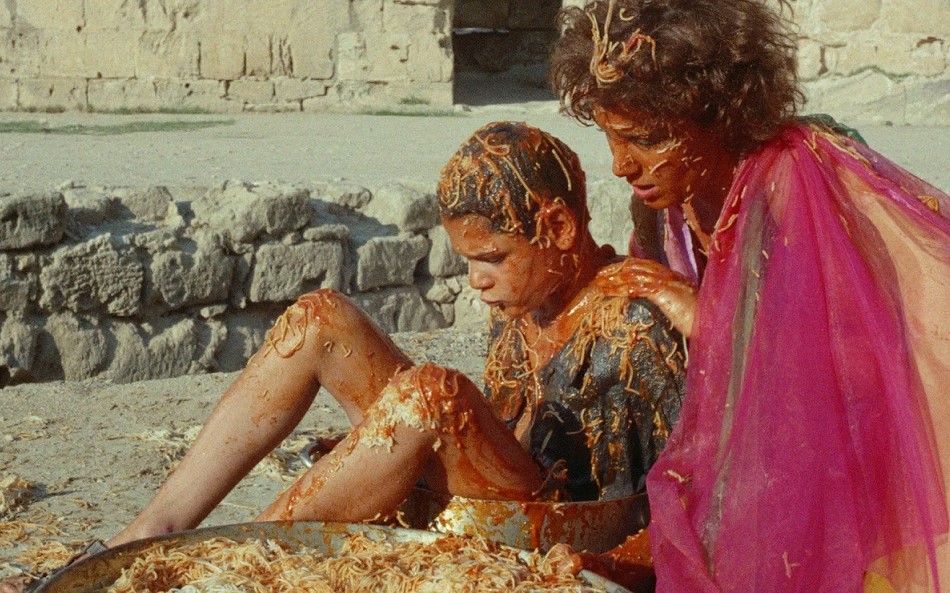
Arrabal indeed lived in a small village that generally supported extremist Franco and his brutal tactics. His father was an army colonel who refused to join Franco’s forces. And his mother did have her husband arrested and sent away. His father attempted suicide in prison and was eventually transferred to a mental facility. He later would have been permitted to return home with his wife’s approval, but she turned down the request.
While Arrabal was never reunited with his dad, the film suggests that his pop was killed by the government because, had he lived, his treatment would not have looked good on the wardens or Franco’s regime. Arrabal resented his mother because of her actions and they had long-lasting issues as a result. He admits as an adult he understood her intent was to protect him from harm because of his dad’s beliefs, but can never fully forgive her. As he grew up, Arrabal excelled at school and earned awards (as it turns out, his mother worked in the government). After establishing himself as an artist, he used his gifts to openly attack Franco and fascism. Spain would transition back to democracy a few years after Franco’s death in 1975.
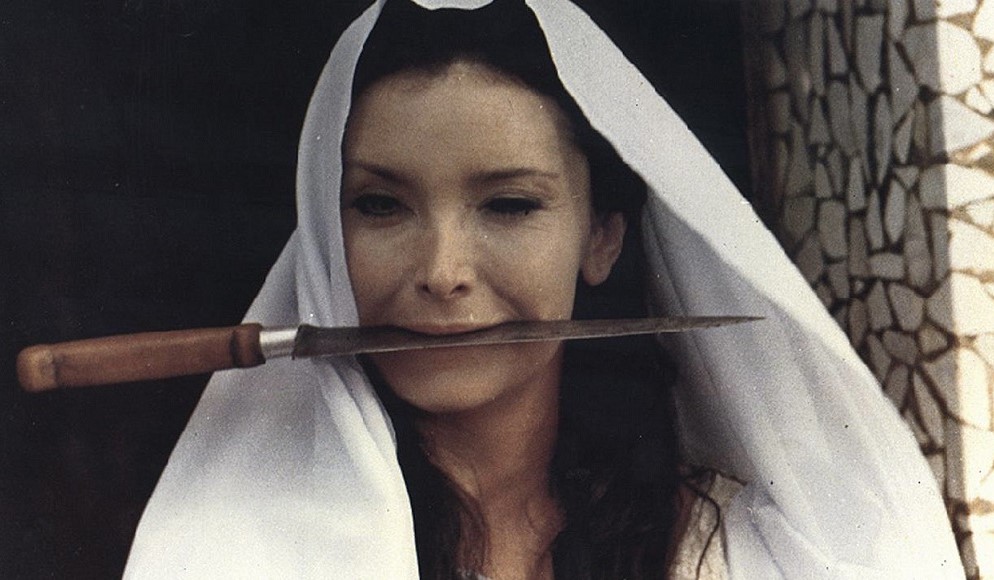
The doc also goes into Arrabal’s fascinating career with the surrealist movement. He tells stories about other famous artists in the “Surrealist” group, as well as the dissent and bickering between members. It seems founder Andre Breton was a pushy leader and that many members hated him (as founder, he considered himself the only figure allowed to admit others into the group, causing internal strife). Viewers also see how Arrabal fit into what is known as the “Panic” movement with other artists like Jodorowski. The documentary is excellent and really helps one not only understand the film, but surrealism in general. There are also comments from contemporary artists on what Arrabal was trying to achieve in his work and their interpretation of his unique mix of provocative, shocking imagery and humor.
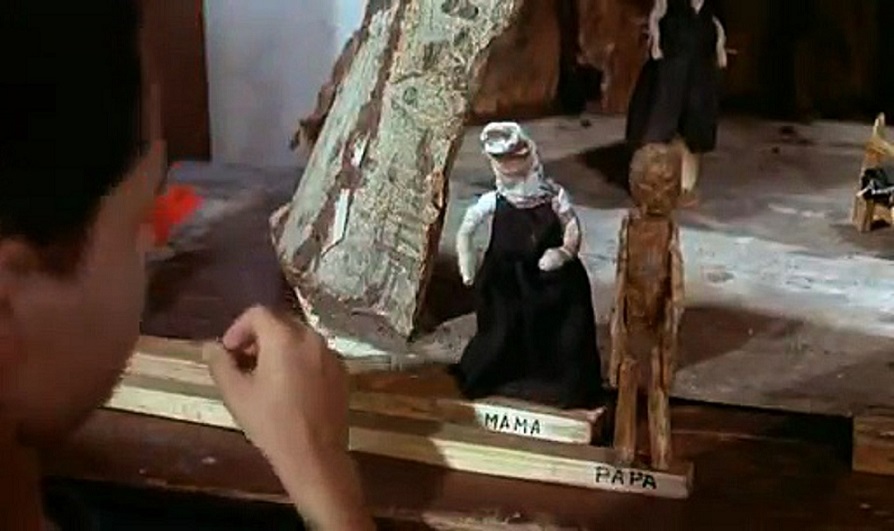
There is also an informative interview with a film historian discussing the movie and Arrabal’s intent, as well as an interesting archival documentary with behind-the-scenes footage from the shoot. Additionally, a trailer and a still gallery is included on the disc.
If you appreciate the strange and surreal, Viva la Muerte is probably one of the best movies of its kind. It’s dark and disturbing with a grim sense of humor and unsettling imagery that stays with you. This “Limited Edition” Blu-ray from Radiance Films is excellent. The Blu-ray provides a high-quality transfer and some exceptional bonuses that help fill in any blanks about the intent and provide insight about Arrabal. This disc is highly recommended.


